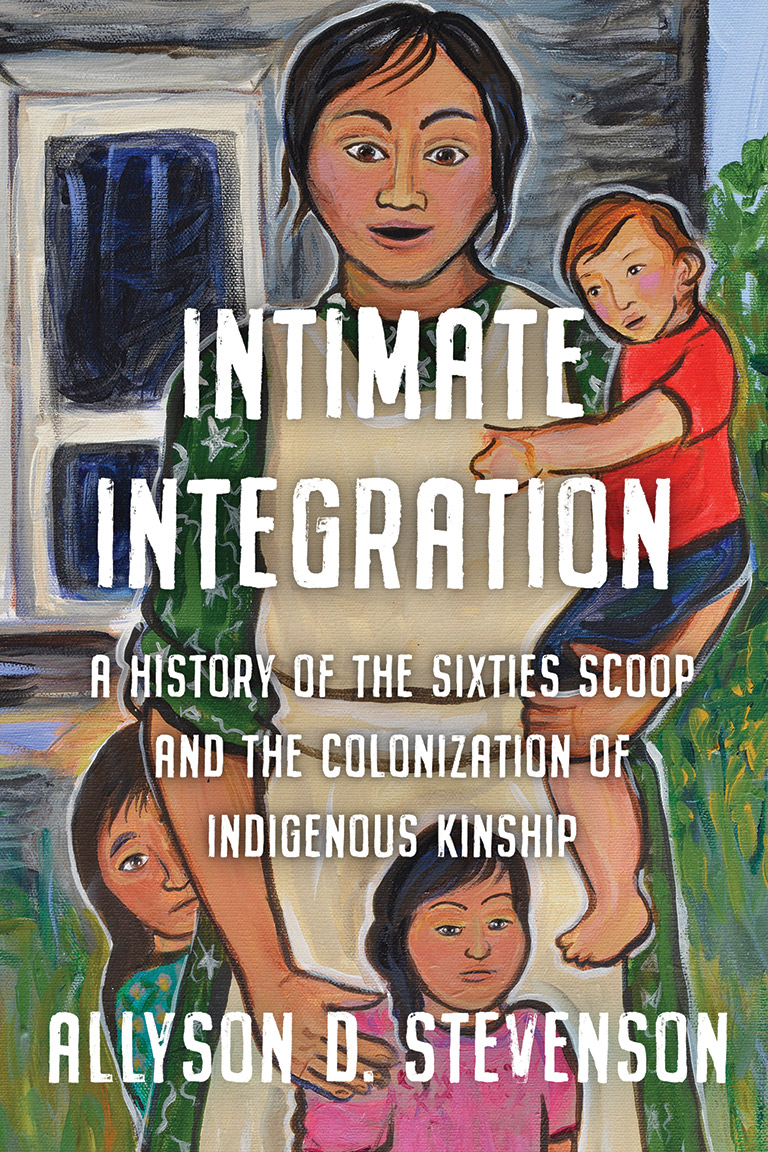Intimate Integration

Intimate Integration: A History of the Sixties Scoop and the Colonization of Indigenous Kinship
by Allyson D. Stevenson
University of Toronto Press
347 pages, $35.95
Every so often a book comes along where the title perfectly explains its contents. We are all aware of integration in the schools, workplace, neighbourhoods and so on — but what is “intimate integration”?
To author Allyson Stevenson, it is “Indigenous transracial adoption.” In the mid-twentieth century, the government of Saskatchewan felt that the best way to eliminate the “Indian problem” was the continuation of the philosophy of the boarding schools, which was to kill the Indian in the child, but to accomplish it in a more humane fashion by adopting Indian and Métis children into white homes and transforming them into “future citizens reared by proper families.”
Stevenson is the chair of Métis studies at the University of Saskatchewan, and the book Intimate Integration is based on her 2015 doctoral dissertation. While this is a scholarly work, it is nevertheless very readable and contains a rich trove of history documenting Indigenous and Métis child welfare in Saskatchewan during the last half of the twentieth century.
By the 1960s residential schools were becoming more overcrowded, and their days were numbered. At the same time, Indigenous families were beginning their urban migration. The federal government’s position was that, once Indigenous people were off the reserve, its jurisdiction came to an end — thereby dropping the “problem” on provincial governments.
As Stevenson points out, Saskatchewan’s response was to establish the Adopt Indian and Métis program, or AIM. This eventually became known as the “Sixties Scoop.” Indigenous and Métis children were taken from their families and placed with white families. Social workers used a checklist to determine suitable homes, but Indigenous families never qualified, because the checklist was skewed toward urban homes with running water, a separate bedroom for each child, furnaces, and other modern amenities that did not exist in Aboriginal communities.
Indigenous people’s crime was their poverty, and the effects of the Sixties Scoop continue to the present.
The children were advertised in the same manner that animal shelters treat dogs and cats today, with headings such as “Safe in your hands” or “Give a child happiness.”
Stevenson notes that “the programs and policies of the Department of Social Services operated under the Euro-Canadian belief that child welfare bureaucracy and the family courts alone could interpret the ‘best interests’ of the Indigenous child.”
In the late 1970s and 1980s, Indigenous people began to fight back. Stevenson recounts an interview with Métis activist Nora Cummings, who recalled how the Native Women’s Association fought for the return of a widow’s seven children to her care. Social workers lied to her and told her that all the children had been adopted, but in fact they were housed in an institution. The effort was eventually successful, and years later, when Cummings was a respected Elder, she met the mother who had successfully raised all seven of her children. That woman called Cummings “her saviour.”
Stevenson points out that the first five calls to action from the Truth and Reconciliation Commission of Canada are directly related to the welfare of children, including calls to reduce the number of children in care, for the use culturally appropriate methods, and to decolonize the child welfare system.
Stevenson is herself a survivor of the Sixties Scoop and has undertaken her own healing journey as well as a successful search for her roots. To conclude the book she states, “Coming home is landed, embodied, and storied; it stitches together people separated by time and space.”
Themes associated with this article
Advertisement




